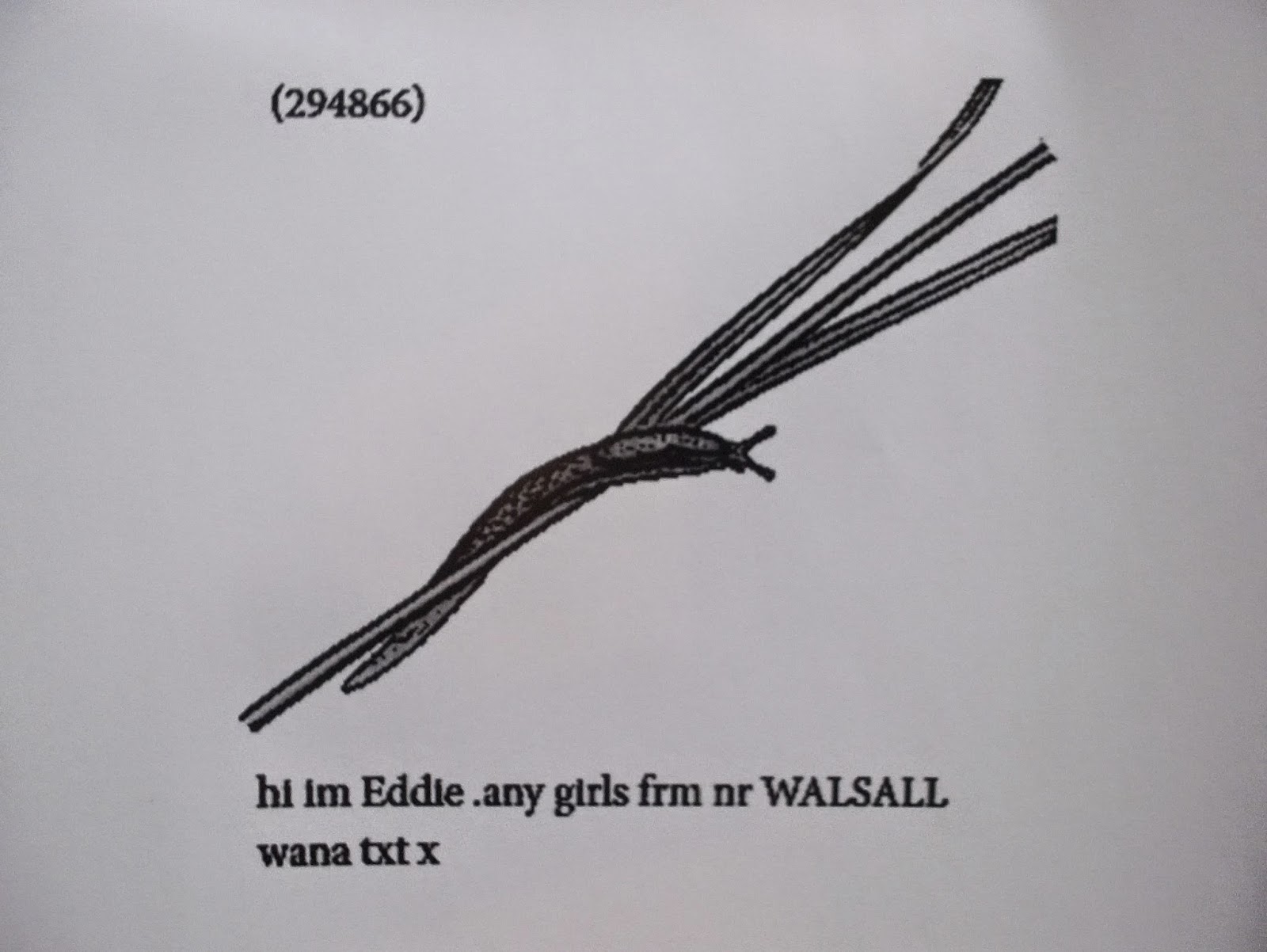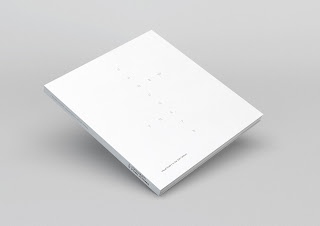series 3 : monk, jenks, o'loughlin, winston, barraclough & bean
 |
| p.o.w. third series poster |
This time I've been invited inside as series' editor. Free reign : choose six poets for six broadsides. Antonio's only stipulation is "make sure it's great poetry". A few months back I had some correspondence with Hansjorg Mayer, the designer and publisher of the futura series from the 1960s and I start by taking a look back at that series. I imagine Hansjorg as The Equaliser of visual poetry : cooly besuited in white as the world around him goes to shit. Keep it clean, let the white space do its work. The twenty-six broadsides of the original futura series (see post below) are a hard act to follow. For me this broadside format works much better when the poet – or artist – approaches the hexagonal panel with an eye for the visual possibilities that the form allows.
Although not strictly a visual poet Geraldine Monk is first on my list of six. Not strictly visual yet she works in the projective tradition laid out by Olson, the page as a musical score. The subtlety around cadence in her work is executed with a precision for layout and typography. p.o.w. 13, gaddings (plural of the word 'gadding', meaning to wander aimlessly) suggests in both in form and content a series of misadventures amidst nature. The six poems take the reader through delirious and vulnerable encounters with the outdoors. True to much of Monk's work the poems oscillate effortlessly between the saucy and the ecological. The poems are a delight to look at, solid as stone structures or fossilised skeletons, they are written in emboldened caps top-and-tailed with a huge capped letter. The first poem begins with an A at the top, rolls through Bs and "ROCK FORMATIONS" towards the decisive loan Z at the end of the poem.
 |
| geraldine monk gaddings |
p.o.w. 14 is by Tom Jenks, the only man in poetry who might have anything in his pocket from a yo-yo to a dead mouse. I've collaborated with Tom on four occasions and managed on each occasion to come away with a new trick or two. His work brings to conceptual poetry the humour that was behind Duchamp's urinal. His ideas are often deceptively wrapped in a red handkerchief and emerge fluffy behind your ears. This time Tom has been collaborating with slugs and snails. This is the broadside in the series that makes people laugh. Tom has married up six images of slugs or snails with cryptic lonely hearts messages from various regions. "hi im Eddie .any girls frm nr WALSALL wana text x". Each mollusc has a six digit number. There's a twist-in-the tail, with the snail in panel 6 being shrunk inside a shell : "Message Me". He's on 252402.
 |
| tom jenks from slugs/snails |
I first heard Pascal O'Loughlin (p.o.w. 15) reading from Yukiko at an evening of poetry for Sonic Youth last Autumn. The poem plays around with literary artificiality in a way reminisce
 |
| pascal o'loughlin yukiko |
p.o.w. 16, Sam Winston's backwords captures the artist Sam Winston emerging as a poet : the central poem is written by an artist who has applied himself for years to finding, arranging and shaping the words ofothers with great originality and dexterity, but hearing the artist himself in his own words after so long strikes a moment of a maestro-composer bumping the pianist of his seat. The poem runs as a column down the centre of text from Kenneth Goldsmith's Day, which was based on The New York Times edition from September 1, 2000. Goldsmith's project – like Winston's poem – questions how words can ever possibly be both flexible and precise enough to do justice to loss and grief on that scale. Winston is one of the artists associated with the arc collective whose catalogue has just been published here and for which I was lucky enough to be asked to write the accompanying texts.
 |
| sam winston backwords |
Simon Barraclough is a man embroiled in a gargantuan project : to write 121 poems about the sun. His project goes under the name of Sun Spots and p.o.w. 17 showcases two of them. As with Sam Winston, Barraclough makes full use of the expanse of space across six panels. There is a wonderful sense of bathos at play in this broadside, the first sun spot invites the reader to follow its circuitous text describing how the sun was formed across "the billion years of agony" at which point we arrive at the sunspot in the centre, offsetting "breakfast oranges" against nothing. It is a wonderful O'Haraesque exercise in offsetting the macrocosmic against diurnal everydayness. There are more of his planet poems in his most recent collection Neptune Blue, though this is the first publication which showcases his new direction towards the sun.
 |
| simon barraclough two sun spots |
Victoria Bean, like Sam Winston, is also associated with arc and is both an artist and a poet and – importantly for this work – a visual poet. envoy (named after the typewriter that was used) showcases six typewritten poems across the six panels of the broadside. Three of the poems are written in a typeface created by the artist herself in which serifs are added to the midpoint of words with a curious runic charm. Bean also uses a technique developed in her book (and film-piece, recently shown in the Visual Poetics exhibition at The Saison Poetry Library) Every Morning She'd Leave Me in which she overlays the same letter continuously over the same letter in a way reminiscent of letterpress production. This allows her to tease out ulterior meanings hidden within words, the 'Have Mercy On Us' within the list of planets from Earth to Uranus.
 |
| victoria bean from envoy |
It’s been a pleasure being asked to edit this series and I couldn’t have imagined that the six poets/artists could have delivered with the originality, beauty and wit that the broadsides showcase. As a whole, the six publications work as a kind of declarative anthology declaring the range of talents currently creating with text in the UK.
p.o.w. series 3 are available for £5 each p+p or £25 for the set of six. To buy email: poetry@unit4art.com or contact: studiobookshop@btconnect.com



Comments